Home » Rhinoplasty (Nose Job) in Turkey – 2026 Cost
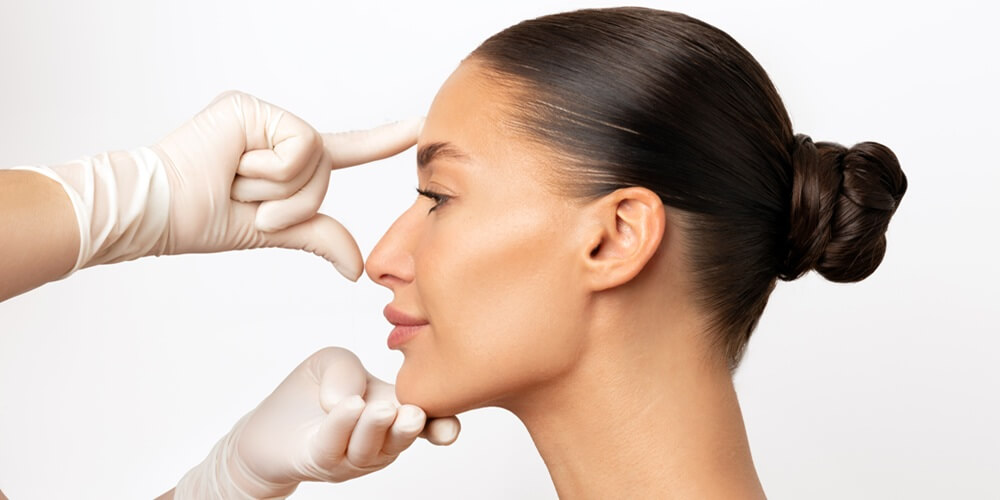
A rhinoplasty in Turkey, commonly referred to as a nose job, is an operation intended to change the shape of the nose for cosmetic and sometimes for medical reasons. The operation can also make the nose smaller or bigger, remove the hump, alter the shape of the tip of the nose or reduce or increase the width of the nostrils. These adjustments to nasal structure can be made by cutting away bone or cartilage, or grafting on tissue from elsewhere in the body. Rhinoplasty is cosmetic (aesthetic) surgery primarily to improve one’s appearance but can also be performed to rectify facial trauma, birth defects, or breathing problems.
Nose job Turkey is a procedure that involves incisions in which a surgeon can access the bone and cartilage beneath the nose. This structure is subsequently transformed to obtain the required one. The technique is divided as open or closed. Open rhinoplasty involves an incision across the columella (the narrow strip of tissue that separates the nostrils) to achieve direct visualization of the underlying nasal structure. In a closed rhinoplasty the incisions are made exclusively within the nostril. The technique utilized is frequently a surgeon preference and is based on the necessary modifications, the patient’s anatomy, and if it is a secondary procedure.
Type | Description | Common Use |
Closed Rhinoplasty | All incisions are made inside the nostrils, leaving no visible scars. | Most common in Turkey; ideal for moderate reshaping. |
Open Rhinoplasty | Involves a small incision across the columella (base of the nose) for full visibility. | Preferred for complex cases and detailed reshaping. |
Revision Rhinoplasty | Performed on a nose that has previously had surgery, often to correct or improve results. | Used when the first rhinoplasty didn’t achieve the desired outcome. |
Functional Rhinoplasty | Focuses on improving breathing or correcting internal nasal structures. | Treats nasal obstruction, deviated septum, or |
Nose surgery Turkey can be divided into two broad categories: functionality and aesthetics. Functional rhinoplasty would entail reconstruction of the nasal dorsum (the bony and cartilaginous portion of the nose) following facial trauma, removal of tumors with contour restoration, and corrective surgery to establish breathing when a nasal valve has been deviated or dysfunctional. On the other hand aesthetic nose surgery includes activities such as decreasing nose width, reduction of a hooked nose, nostril reduction, and nasal tip reduction for improved look of the nose. Both functional and cosmetic surgeries for the nose are performed using essentially the same techniques involving the augmentation and reduction of the nasal bones and cartilages.
Rhinoplasty is the simultaneous surgical process of both functional and aesthetic nose surgeries and is the most popular cosmetic surgery among both men and women. Patients may elect for rhinoplasty outside their home country for a number of reasons related to availability, cost, and perceived magnitude of the surgery. Istanbul is the world’s leading city for rhinoplasty today. Most of these operations are carried out in a privately insured environment. Massive reconstructive rhinoplasty for the purpose of restoring structural stability or to rebuild dorsal and sidewall support always demands general anesthesia. Aftercare, including wound cleansing on a daily basis during 10–14 days, is also essential.
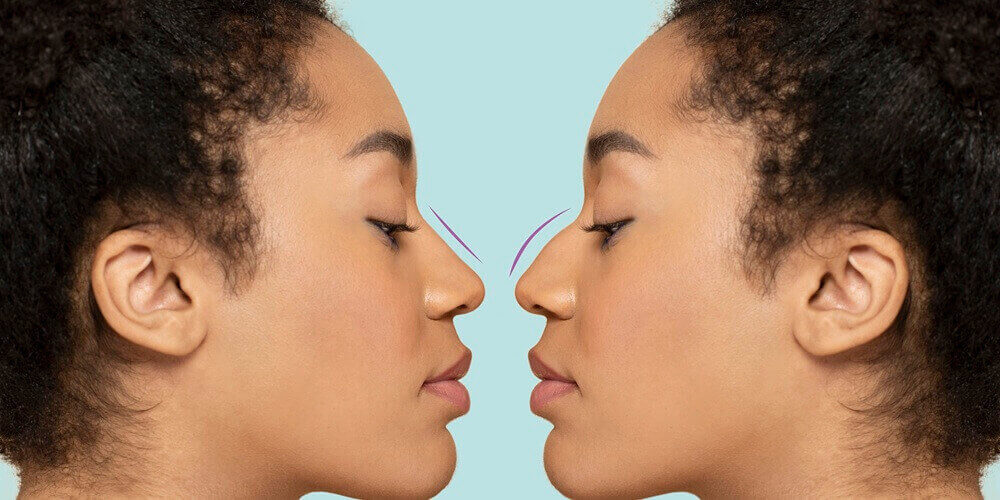
Turkey has emerged as a favoured setting for ambulatory aesthetic surgery in the past 20 years, as patients from other countries choose for surgery to reduce costs without lowering standards. The country provides the best of rhinoplasty surgery conducted by experienced and skilled surgeons with low prices. Not to mention, the price of a nose job in Turkey is from $2,500 to $4,000 in contrast with prices for the same types of rhinoplasty around the world, such as the USA, Canada, the UK, or Australia, which can vary from $7,500 to $15,000. This impressive cost difference contributes to a significant reason to travel and have surgery on your nose in Turkey.
Despite the price advantage that attracts many foreign patients, the quality of plastic surgery in Turkey meets or exceeds international standards. The government, private enterprises, and universities have invested significantly in improving the healthcare system and investing in technological development, resulting in many cities acquiring high-quality and internationally rated hospitals. These facilities often boast joint commissions and international accreditations, making them comparable to similar hospitals in other countries. Furthermore, foreign patients predominantly seek surgery in or near Istanbul, the business, tourism, and cultural center of Turkey. The city features world-class hospitals staffed by highly qualified surgeons and an extensive range of ancillary services. Ultimately, most patients who travel to Istanbul for rhinoplasty surgery are satisfied with the quality of the procedure, despite an inherent risk of postoperative complications.
Whether rhinoplasty is for enhancing beauty or for functional reasons like respiratory issues, choosing a surgery far from home can expand options and allow for an unforgettable trip. This is particularly true in Turkey, not only considered the cradle of history but also the top country for rhinoplasty. Currently, Turkey is ranked second in the world for health tourism. Its geographical location, serving as a bridge between East and West, together with a favorable economy and a solid legal infrastructure, facilitates quality—yet affordable—health services; all factors that make Turkey one of the most popular destinations for rhinoplasty.
“Affordable prices—which seem quite low compared with Europe, Canada, and the United States—go one step further and also mean high quality,” say Istanbul experts Lars Peter Hölzle and Norbert R. Kübler in their work “Rhinoplasty in Turkey.” The high number of medical tourists to Istanbul and Turkey has not only become a strong pillar of the Turkish economy, it also indicates how patients value the affordable rhinoplasty Turkey offers. Some 80,000–100,000 people come anytime in the year for either an aesthetic or functional operation of the nose. This number will continue to grow in the following years.
Zaren Clinic dedicates itself to making patients feel at home, before and after surgery, by catering to cultural needs and adapting traditional procedures accordingly. The Istanbul clinic offers a comfort package that supplements world-class surgical care with familiar amenities and additional services. The surgeons at Zaren Clinic combine decades of experience with all of the latest advances in rhinoplasty research and technology.
State-of-the-art technology helps the best rhinoplasty clinic in Turkey achieve superior results for functional and aesthetic nose surgery. Targeted fusion probes transmit ultrasonic waves to bone and cartilage, resulting in less pain, swelling, bruising, and nose packing than with conventional rhinoplasties. Zaren also offers closed (scarless) and open rhinoplasties; revisions and deformity corrections; surgeries for a long or drooping nose; and sinus septum corrections. Patients can view photos to see the results of procedures performed at ZarenHealth.
Some of the greatest advantages of choosing rhinoplasty in Turkey are the high level of expertise among the surgeons performing it, as well as the use of the latest surgical techniques and technology. The Turkish rhinoplasty surgeons at Zaren Clinic have extensive experience in plastic and reconstructive aesthetic surgery and have performed many rhinoplasties to international patient standards.
Having an expert on this type of soft tissue is extremely important. Shaping these soft tissues into a harmonious position with the patient’s face and raising the nose tip in the middle are the techniques that determine the aesthetic skills, sense, and experience of the surgeon. The surgeons at Zaren Health offer safe rhinoplasty surgeries designed according to the needs of the patient.
Rhinoplasty procedures at Zaren Health benefit from cutting-edge technologies that continually refine final results. At Zaren Clinic, we offer the best technology for individual cases and blend procedures to achieve the best result. If you are a patient who is considering Turkey nose surgery, then you should not be shy about asking your plastic surgeon about what will take place, what technologies will be applied, and what techniques are going to be employed.
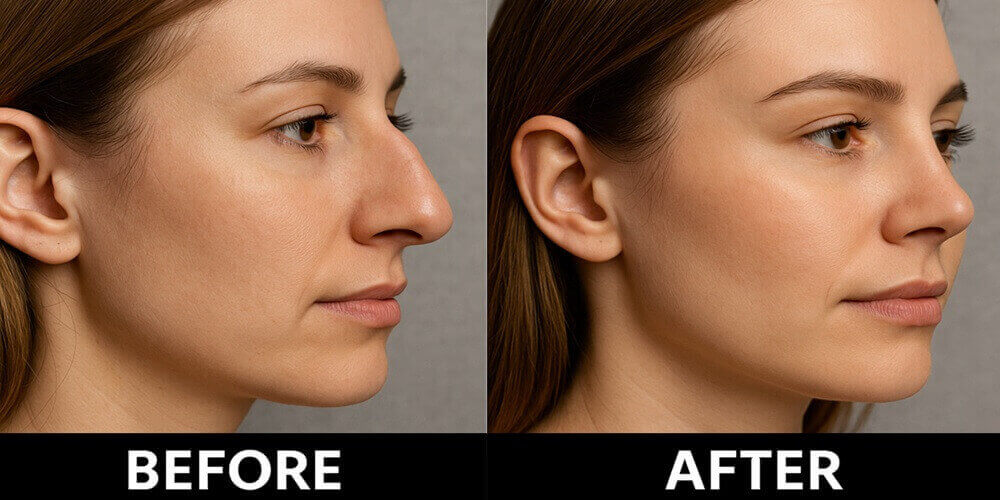
The before and after photo album below provides an example of the incredible transformative results our patient-focused rhinoplasty can achieve at Zaren Health. The gallery demonstrates the clinic’s dedication to excellence and cultural understanding with a section devoted to internationally favoured patient selections. It visually conveys the expertise of the surgeons and the advanced technologies utilised.
The before-and-after nose job gallery highlights the aesthetic transformation of noses as well as the patients’ expressions and overall facial harmony. It testifies to the skills of the surgical teams and the significant contribution of cutting-edge techniques to clinical quality and patient safety. Moreover, testimonials confirm that a beautiful nose build-up enhances appearance and heightens self-confidence.
When it comes to a rhinoplasty journey, the patient experience is a significant consideration. This ranges from meeting the surgeon, discussing the procedure, going through the operation, and, of course, the recovery. Most Turkish rhinoplasty surgeons have photos of their previous patients on display in their clinics and on their social media accounts. This will help you develop a good feel for style, variation, and difficulty level. There are also cases when you are considering rhinoplasty in Turkey, you can come across other people leaving their feedback and word of mouth recommendations for the best rhinoplasty clinic in Turkey or doctor. Sometimes, a simple internet search or joining private Facebook groups can unearth some valuable anecdotal stories of other patients’ experiences.
They are great resources and often recommend the top experts and clinics in the area. Many have also posted their entire rhinoplasty journeys throughout the process. In fact, before-and-after photos, with detailed narratives of each step — consultations, surgery, recovery, turndowns and, occasionally, additional surgeries are well represented and easy to find.
While the surgical techniques for rhinoplasty are the same the world over, the perception of beauty varies from country to country, culture to culture, and even person to person. The Zaren Health therefore offers fully individualised rhinoplasty procedures tailored to each patient’s needs, whether functional, corrective, or cosmetic in nature.
Turkey has steadily gained a reputation as one of the premier locations for rhinoplasty, largely due to the world-class treatment on offer, as well as the logical combination of inexpensive operations with a relaxing sightseeing break. These factors result in a continually increasing number of non-Turkish patients choosing the country for nose surgery Turkey. Pricing advantages are obvious: a rhinoplasty operation in the UK typically costs around £5000; in the US and Canada, it’s roughly double that.
Like any type of surgery, there are possible risks and complications following a rhinoplasty. Potential for postoperative complications such as swelling, bleeding, infection, thrombosis, and reactions to anesthesia. Nasal obstructions can be caused by swelling and crusting or blood clot formation in the nasal passages, evidence of infection, or postoperative trauma. Other risks include a loss of feeling in the incision lines and around the plastic you have altered, skin discoloration, difficulty in breathing through your nose, septal perforation, unwanted shape of the nose, and a need for revision surgery.
Infection is a rare occurrence after Rhinoplasty, but it may present with swelling and tenderness over the nasal soft tissues along with pain and fever. These infections usually do well with proper antibiotic treatment. In the worse cases, excessive bleeding may injure the lining of the nose, cause swelling, and temporary blockage of the nose. Standard protocols at Istanbul Zaren Health include comprehensive preoperative blood tests and a chest X-ray. An antithrombosis stocking is applied prior to surgery to mitigate blood clot risks. Special care is required for patients with underlying conditions such as diabetes, hypertension, heart disease, liver or kidney disorders.
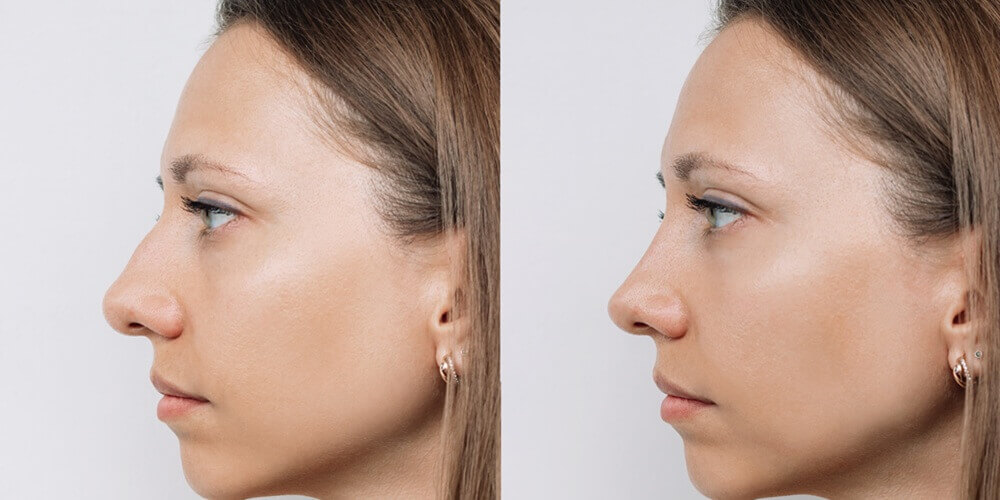
During the last two decades, extensive investigations on surgical techniques in rhinoplasty has been performed. Many methods have been introduced and deemed suitable for evaluating the nose structure. However, the latest technology is 3D imaging technology. Besides the latest technology, a differentiation of the rhinoplasty process is closed and open rhinoplasty.
The anatomy of the nose during a procedure should be considered, along with the nature of the performed procedure, for rhinoplasty techniques to achieve the best outcomes. A thorough understanding of the nasal anatomy and possible techniques will allow surgeons to perform rhinoplasty successfully.
Future research can consider what new technologies will emerge over the next few decades. It is likely that 3D imaging will allow rhinoplasty to become more precise by showing surgeons likely results in more detail before surgery. This will enable more accurate adjustments during the procedure as well.
Augmented reality (AR) can also allow surgeons to operate in real-time with extra information layered into their field of view. In rhinoplasty, AR can provide guidance on the best approach to reshape the nose for improved breathing. Industry 5.0 pushes towards greater collaboration between people and technology, mainly through artificial intelligence. AI had been applied to analyze pre- and postoperative images, reporting patient satisfaction based on nasal and facial proportions.
Careful incision on the inside region of the nose allows the lowering of the skin without resulting in visible scars. During the procedure, the nose is reshaped according to the requirements. For small, backward bumps, surgeons usually reshape the nose by shaving the bone. However, if the bumps are large, a bone-cutting technique is preferred. Incisions are made at specific locations to access the bone and cartilage, which are then reshaped accordingly.
The next step aims to avoid a round tip of the nose by removing small portions of cartilage and repositioning the nasal tip. Although a columella strut could be used to support the tip, it is preferable to employ sutures. Such sutures hold the tips together and ensure the newly shaped nose retains its form.
During the consultation, the plastic surgeon evaluates the patient’s nasal structure, skin, breathing difficulties, and other medical conditions. Photos will be taken from different angles to aid in analyzing the procedure and for showing the before-and-after results. Discuss recovery time, risks, and complications, as well as the cost. The consultation also addresses the patient’s desires to craft the best procedure for their needs. Next, a surgical plan is developed, prioritizing rhinoplasty goals and accommodating time constraints. The surgeon and patient then jointly determine the optimal approach.
The surgical technique is determined according to the identified problems and personal preferences. All of the procedures on the nasal dorsum, nasal tip, alar nose, and nasal opening and entry are performed during surgery. The operation starts with nasal incisions and proceeds with dissection within the subperiosteal–perichondral plane of the nose. This approach is preferred because it provides a clear surgical field and protection of the neurovascular bundle running over the nose during open rhinoplasty.
The nasal dorsum is straightened. If the nose is bent, it must be corrected, a crooked nose, by osteotomy, and the nasal dorsum is redefined. On the other hand, if the dorsum of the nose is concave, it needs to be elevated and prepared to accommodate a graft. The volume of the tip is adjusted. The classical hump nose is the nose that protrudes the most affected area. In the concave dorsal nose, the lateral segments of the nose protrude disproportionally. The lateral parts also surround the total face. It protrudes the most affected with an irregular concave dorsal nose. This portion is cut down with an osteotome or rasp. In all types of nasal deformities, the nasal entry area tends to appear small and gives an impression of shrinking. This shrunk and dense appearance triggers the impression of a sharp nose.
Nose surgery Turkey requires a convalescence period of approximately one to two weeks. Post-surgical interventions include the use of gowns and bandages, and potentially a head bag that extends over the nose to facilitate recovery. Auxiliaries, such as bandages, also play a part during the recuperative stage. Depending on the technique utilized, a splint may be applied, functioning both as a shield for the new nasal structure and to maintain the position of dissected skin in the early post-operative phase.
Congestive symptoms are nearly universal following surgery. Patients commonly experience swelling around the nose and cheeks, giving rise to the sensation of nasal congestion caused by congestion and edema of the mucosal membranes. Swelling and/or bruising around or under the eyes may also occur. Certain surgical approaches necessitate the insertion of small, soft, flexible plastic sheets between the septum and the sidewall of the nose, secured in position by a single stitch. These splints enable the sidewall to heal in its new position and prevent scarring from forming there during recovery after rhinoplasty.
Country | Average Cost of Rhinoplasty | Notes |
Turkey | €2,000 – €3,000 | High-quality procedures at a fraction of European prices. |
Spain | €6,000 – €10,000 | Prices vary depending on the clinic and the surgeon’s experience. |
United Kingdom | Up to £10,000 (approx. €11,700) | One of the highest costs in Europe; limited affordability for many. |
The Turkish Government is contributing to the health sector with a long list of new hospitals and clinics being established across the nation. These providers offer a truly reasonable fee, while still upholding a professional standard of care. Especially, affordable rhinoplasty Turkey surgeries are still much cheaper than in the rest of the world, because of cheap materials and labor. With the substantially lower nose job in Turkey cost and excellent level of service quality, it is no wonder that thousands of rhinoplasty patients are drawn to the country each year.
Criteria | Description |
Age | Typically, 18+ years old, after facial growth is complete. |
Physical Health | Generally healthy with no serious medical conditions that impair healing. |
Non-Smoker | Non-smokers heal faster and face fewer surgical complications. |
Realistic Expectations | Understands the limits of surgery and has realistic goals. |
Nasal Structure Concerns | Dissatisfaction with the shape, size, or symmetry of the nose. |
Breathing Issues | Functional problems such as a deviated septum or chronic congestion. |
Emotional Readiness | Stable mental health and positive reasons for seeking surgery. |
Not Seeking Perfection | Desires improvement, not perfection or drastic transformation. |
Understands Risks & Recovery | Willing to follow pre- and post-op instructions and accepts potential risks. |
Commitment to Aftercare | Ready for downtime, swelling, and follow-up visits. |
Open rhinoplasty involves elevation of the soft-tissue envelope of the nasal dorsum past the lower borders of the lateral alar cartilages, including elevation and division of the columella, the midline tissue bridge between the nostrils. This allows the surgeon direct vision and improved access to the nasal bones and cartilages. Open rhinoplasty is often preferred when there is a need for extensive deconstruction and subsequent reconstruction of nasal structures. Typical indications include navigating a surgical scar from a previously performed closed rhinoplasty or following trauma. Corrective anatomy includes open rhinoplasty in a nasal reconstruction following cancer resection or in the clefted nose. When a septal perforation has been created, the repair is usually performed as part of an open approach operation. During open rhinoplasty, the complete nasal skeleton is accessible, and virtually any anatomic correction is achievable.
During open rhinoplasty, the association of the caudal edge of the septum and the anterior nasal spine is carefully evaluated. It is frequently merged and deformed, requiring resection and reconstruction. Access to the bony vault is needed to perform medial and/or lateral osteotomies. The open rhinoplasty approach is especially suitable when extensive dorsal resection and nasal bone mobilization are necessary. When resecting a prominent rhinoplasty nose, direct vision and protection of the remaining dorsum enable careful reshaping while preventing dorsal irregularities. The excessive tension associated with excess skin is often corrected with an additional vestibular skin strip excision.
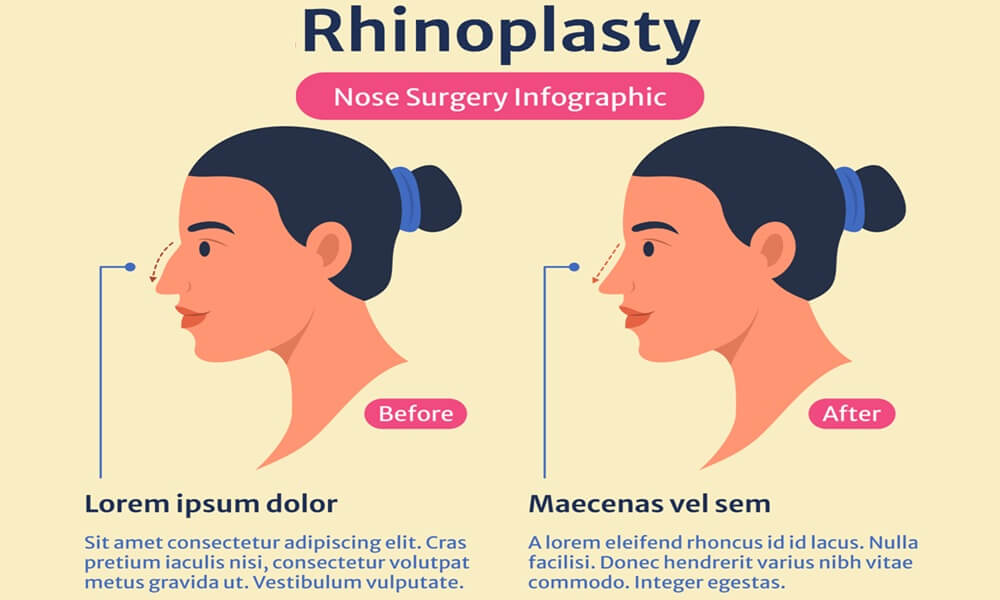
A closed rhinoplasty Turkey is defined by the placement of all incisions inside the nose, making it suitable for a wide variety of secondary rhinoplasty patients due to its minimal disruption of the nasal soft-tissue and skin envelope blood supply. In skilled hands, and when indicated by the appropriate anatomy, the closed-rhinoplasty approach is capable of producing excellent aesthetic and functional outcomes in both primary and revision cases. It also avoids the external scarring and tip edema often associated with the open approach.
In nearly all secondary cases, the restoration of tip support is challenging and often requires the placement of columellar struts or tip grafts. Although these procedures tend to be simpler through an open approach, the remainder of the surgery can often be accomplished without raising the entire soft-tissue envelope, preserving its limited blood supply. For instance, common maneuvers such as extracorporeal septoplasty—despite being perceived of as open rhinoplasty maneuvers since they involve rotation of the distal septum and sometimes require distal septal reconstruction—do not actually require the skin to be undermined. In addition, although all types of rhinoplasty can be performed using an endonasal visualizing scope, the use of a 4-mm, 0-degree endoscope makes endonasal visualization more feasible, allowing dissection and reconstruction of the segments of the nose that would otherwise be difficult to visualize through completely internal incisions.
Non-surgical rhinoplasty, occasionally called a “liquid rhinoplasty,” entails the placement of dermal fillers to correct areas of a misshapen nose. It is sometimes also used to camouflage symptoms associated with a previous surgical rhinoplasty. Various dermal fillers are used, including: hyaluronic acid, calcium hydroxylapatite, poly-L-lactic acid, polymethylmethacrylate, and autologous fat injection.
The non-surgical rhinoplasty is very effective in achieving a “lifted nose.” The procedure is especially helpful in lifting the tip of the nose. Occasionally, the bridge of the nose can be augmented as well, for example, in cases of a “saddle nose.” While primarily done for enhancement, the non-surgical nose job can sometimes be used in practical applications such as improving breathing.
A surgeon performing a non-surgical rhinoplasty should have a complete understanding of the vascular anatomy of the nose. As with Botox injections, there has been reported a number of cases of skin necrosis and blindness due to the injections of dermal fillers into non-surgical nose jobs. These complications do not arise from the lips or other areas of the face that are injected, but result from the possible spread of the injected material through the branches of the facial artery, frequently the angular artery. The skin necrosis is usually treated with hyaluronidase as an initial treatment. Blindness is treated with hyperbaric oxygen therapy, but that outcome is usually irreversible.
The procedure’s advantages include cost and recovery time. The cost of the procedure can range anywhere from less than US $1,000 to more than $5,000, depending on the type and amount of filler used; this is up to 10% of the cost of traditional rhinoplasty. The recovery from the procedure can be achieved in as little as a day or two, compared with the weeks or months required for recovery following traditional rhinoplasty.
Some of the disadvantages of this procedure are that it is usually only effective on the upper two-thirds of the nose (bridge of the nose only), while the tip of the nose is generally beyond the reach of the procedure. Unlike surgical rhinoplasty, the non-surgical nose job Turkey can only make a nose look bigger, not smaller. Due to the temporary nature of the fillers, a second procedure is required to maintain the cosmetic effect. Filler injections may also result in a blotchy complexion due to small, widespread capillary embolization. As is the case with all filler injections, allergic reactions are a possibility, although chances are very low. If an autologous fat transfer is used, the chances for an adverse reaction are minimal, but the end result is, on the whole, much less impressive.
The nose, being a central facial feature, plays a key role in defining a person’s ethnicity. It provides critical information about gender, age, and ethnic group. Therefore, the goal of ethnic rhinoplasty is to restore the patient’s nasal functions while creating a tightly integrated nose that is compatible with the patient’s features and meets the patient’s aesthetic aspirations.
Patients of African, Asian, Hispanic, and other backgrounds constitute special rhinoplasty groups. These noses typically have thicker skin and narrower nasal airways, showcasing increased airway resistance. Reconstruction may involve extensive grafting or tailoring, and there is a higher risk of long-term complications. Cartilage grafts, traditionally harvested from an ear or rib, can now be sourced from the nasal septum through minimally invasive endoscopic techniques.
The term nasal reconstruction describes procedures in which nasal tissue defects are covered. One indication is skin cancer in the nose, whose by-products cause tissue defects of different sizes. In these cases, it is important to know the nasal aesthetic subunits and to cover tissue defects completely with respective flaps. Other possible indications for nasal reconstruction are trauma of the nose, burn injury, and inflammation.
Usually, local skin coverage is not sufficient, and the defect has to be covered with another skin type. Local tissue flaps using forehead skin and free composite grafts (containing skin and cartilage) from the concha are the methods of choice for nasal reconstruction. Using the methods of nasal reconstruction in skin cancer for the other indications, trauma, burn injury, and inflammation, equally satisfactory results can be achieved. In a first step, the defect should be closed with suitable skin, and in a second step, cartilage can be implanted in order to restore the nasal framework.
Not all patients who undergo rhinoplasty are entirely satisfied with the results of their surgery. Sometimes it is a minor aspect of surgery, such as an asymmetric tip cartilage or a small persistence of a dorsal hump, that may require revision. In other cases, much more extensive surgery may be desirable to completely reshape the nose and to produce an aesthetically more pleasing appearance. The interval between revision rhinoplasty Turkey and the primary procedure should be at least 6 months, preferably 12 months, in order to allow all the edema and scar tissue from the primary surgery to subside. Often, secondary rhinoplasty surgery presents the surgeon with more challenges than the primary procedure because of the previous alteration of the skeletal framework of the nose induced both by the primary surgery and by the natural wound healing and remodelling of the nose after the first operation. The overall difficulties should never be underestimated, and a change of surgical approach (open rhinoplasty is often preferable) or need for augmentation (grafts of various materials) should be anticipated. For this reason, the experienced Turkish rhinoplasty surgeons are always capable of offering correction of an undesirable rhinoplasty result.
Certain aspects distinguish revision rhinoplasty in Turkey from the primary procedure. As the wound healing process proceeds in a different manner for each individual patient, it is not always possible to predict the extent to which the body will respond to secondary trauma. It has been established that scar tissue that is mature can withstand surgical trauma comparably with unoperated tissue, but some scar tissue appears to be more delicate than others, even after an extended period after the primary surgery. Furthermore, nasal unit defects caused by previous surgery or trauma can alter healing capacity and require careful examination and different surgical approaches. Because the surgical dissection and resection performed in each procedure in the past result in an individualized mix of scar tissue, distorted tissue, or deficient skeletal framework tissue, revision rhinoplasty differs in every patient.
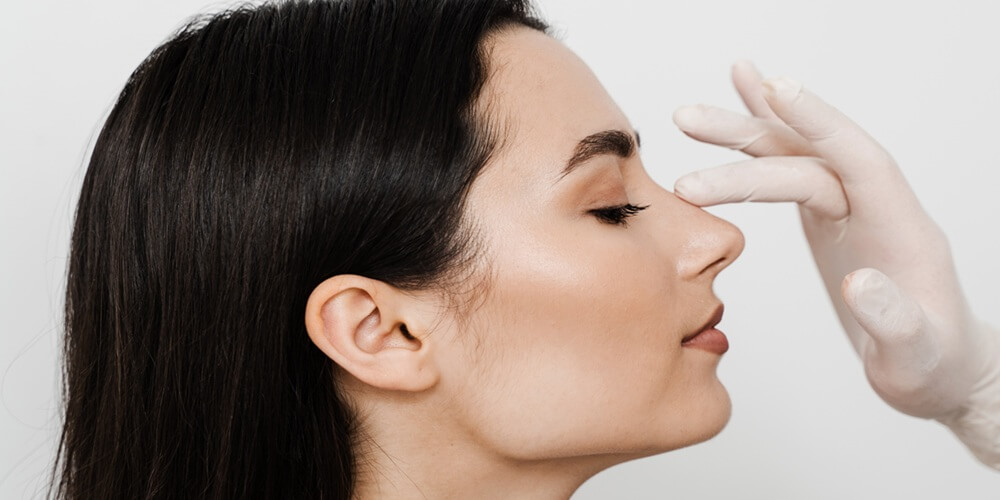
Age is an important consideration when undergoing rhinoplasty because the cartilage of the nose changes over time. The ideal age is when a person is fully grown with a nose that has fully developed. Cartilage growth generally finishes between the ages of 14 and 16 years. Younger people can perform rhinoplasty operations, but only to repair the deformity caused by an accident. Performing dorsal hump, tip deformity, and other aesthetic operations at early ages is not recommended because the patient’s face and nose tissues are still growing. In people older than twenty years of age, this surgery can be performed safely because facial growth has been completed.
Advanced aging can also create a relative contraindication for surgery because of the changes in the structure and quality of the skin. The cooperation in postoperative care and the ability to accept a realistic result are other important criteria. Smokers, especially in the patients who require a skin graft after the surgery, should quit smoking two weeks before the surgery and avoid it at least six weeks after the surgery to ensure proper wound healing. Illnesses affecting wound healing, conflicts of interest, and patients’ expectations should also be considered. Surgery should be delayed in cases of permanent antagonist formation of the wound, for example, highly caustic wound scars or burn injury.
The duration of a rhinoplasty operation varies according to the specific changes to be implemented and the nasal structure of the patient. Generally, the procedure lasts between 1 and 4 hours.
During a rhinoplasty, the aesthetician removes the skin protecting the nasal cartilage and bone, reshapes the nasal structure by reducing or adding tissue, and finally overlays the skin.
The cost of rhinoplasty surgery can be a significant factor in choosing the destination. Chicago Rhinoplasty costs are among the highest in the world, and even three times the cost of the same treatment in Turkey. Simply put, if cost savings matter, Overseas Turkey is the obvious choice. In Chicago, surgeries often cost $7,500 to $9,500, whereas comparable services in Turkey, including the associated travel expenses, are approximately $3,000.
Rhinoplasty, which alters the shape of the nose, is among the most popular surgical procedures among patients from the EU and UK, where states have signed collaboration agreements with Turkey guaranteeing high standards of healthcare. Although the Turkish public hospitals provide surgery free of charge, patients pay for private facilities to avoid these long waiting times. Travelling to Istanbul with top European surgeons and a month’s worth of holiday for only $4,200 represents an irresistible deal for many. The client accounts for an estimated 40% of the total turnover of Turkey’s cosmetic surgery clinics.
The location and size of incisions required during rhinoplasty influence the visibility of scarring. Closed rhinoplasty Turkey incisions are well concealed within the nostrils. Open rhinoplasty entails a small external incision along the columella, which may result in a scar that is typically hidden in the shadow cast by the nose. Transcolumellar scars are usually inconspicuous after healing is complete. Although scar formation is an aspect to consider before surgery, it usually poses no significant problem. Experienced surgeons make every effort to conceal surgical incisions.
Not all rhinoplasty procedures leave scars on the outside of the nose. For example, cartilage or bone grafting might require making an additional incision behind the ear to extract a cartilage or bone graft. The incision behind the ear can be well concealed in the natural folds of the auricle following an ear lift operation. Even if external incisions are made during surgery, scarring can be minimal and effectively concealed. Besides the location and dimension of the incision, a patient’s secondary gain, scar healing tendency, and general health also affect the final appearance of the scar.
The typical recovery period for a rhinoplasty operation is two weeks, but the initial phase can be even shorter if there is no external incision. For the first two weeks, any physical activities that might expose the nose to impacts are forbidden, and it is recommended to sleep on the back with the head raised. Swelling and bruising will generally subside after the third day, but the nasal bones will remain vulnerable throughout this time.
In most cases, patients can return to their social routine just a week after surgery, receiving post-operative care with special bandages placed on the inside and outside of the nose. These bandages must be maintained properly and changed regularly to prevent any infections resulting from the surgery. A follow-up assessment is typically conducted 7 to 10 days after the procedure to evaluate healing progress.
For patients who view nose surgery Turkey as a significant investment, many clinics offer financing options. Given that rhinoplasty surgery is a procedure with an extremely high success rate, many patients consider it an attractive alternative to their payday loan. Being able to finance your nose surgery is a huge benefit, as it means that patients from all walks of life can have the look they desire without having to worry about the sometimes high costs.
Some clinics offer interest-free finance over a short period of time, while others provide longer-term payment plans. It is important to consider that interest fees will apply to longer-term loans, and that patients should choose a payment plan that suits their personal needs.
Hello!